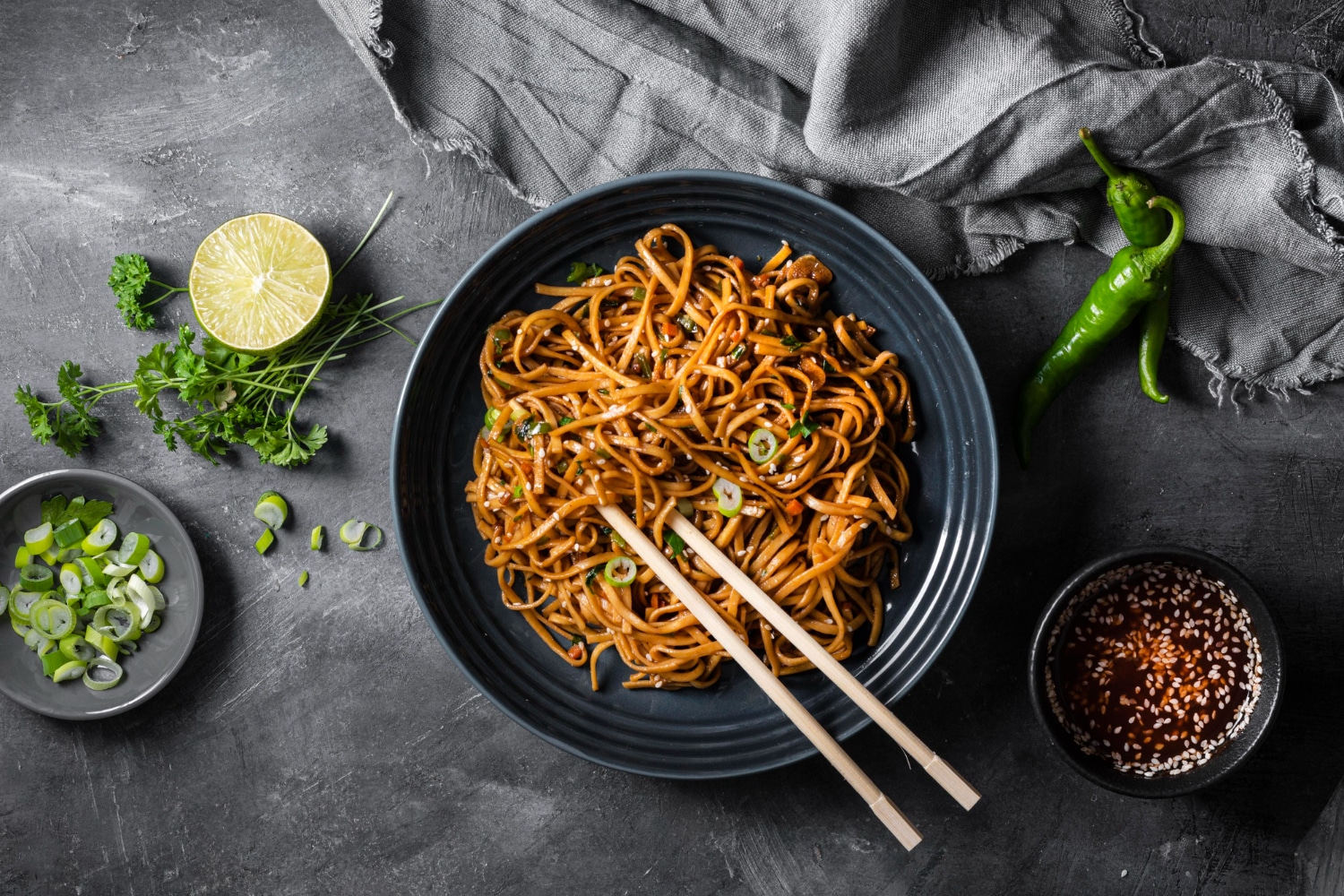This question bugs people who have Celiac disease or want to go on a gluten-free diet.
It may seem daunting to keep eating your old staples when you discover that everyday food items made of wheat flour do have gluten, and you’re not just hindered from eating spaghetti noodles or pasta – wheat flour is in everything, from crackers to newly-baked bread from your local bagel shop. How can a person on a gluten-free diet navigate a world of food that is made of wheat and has gluten content?
Do Spaghetti Noodles Have Gluten?
Regular spaghetti noodles have gluten. To keep eating spaghetti (or any past for that matter), you need to locate gluten-free substitutes. That will provide more or less the same experience. If you want to steer clear of gluten completely, you cannot eat regular, store-bought spaghetti noodles as these are not gluten-free.
Global standards for what constitutes gluten-free are also different from state to state, so it’s important to check the nutritional guide for all the food you buy. If you see wheat, then don’t buy it – it has gluten because wheat has gluten.
Is Instant Noodles Gluten-Free?
Instant noodles can contain wheat, which doesn’t make them gluten-free. If you want to buy and consume instant noodles, you need to find the brands that use rice noodles instead of wheat-based noodles. If you’re thinking of Chinese egg noodles and similar products in Asia, the answer is still no; they are not generally gluten-free either.
The flour used by manufacturers is always the source of gluten. Generally, there is no reason for these manufacturers to shift to other types of flour because the gluten-free market is not big in Asia, as people’s diets have always had gluten. People aren’t looking for gluten-free products frequently.
What Kind of Noodles is Gluten-Free?
There are several commercial substitutes available in the market.
Brown rice pasta
As the name implies, this pasta type is made from brown rice instead of wheat flour. Despite being a grain type, brown rice does not contain any quantity of gluten, and when the flour ground from brown rice is made into dried pasta, you get chewy pasta with a very mild rice flavor.
The texture, bite, and flavor profile of brown rice pasta are essential to making different traditional pasta recipes.
Like whole-grain wheat pasta, brown rice pasta also contains a sufficient quantity of dietary fiber.
You can quickly get an average of three grams of dietary fiber from just 195 grams of cooked brown rice pasta. Brown rice pasta also contains magnesium, selenium, and manganese. You also get a whopping number of natural antioxidants from the bran of the brown rice used for making the pasta.
Shirataki noodles
Shirataki noodles are a particular noodle type manufactured from the konjac plant root. What is truly interesting about shirataki noodles is because dietary fiber is essentially indigestible; the resulting mash from masticating shirataki noodles goes through your system without being digested or absorbed.
Shirataki noodles are naturally excellent for people suffering from digestive issues. The glucomannan is effective in assisting people who suffer from digestive problems.
Should you have issues with lowering your blood glucose levels and cholesterol, you can also eat more shirataki noodles. Are you suffering from bouts of constipation? This noodle type can also help improve your digestion.
Chickpea pasta
Chickpea pasta is one of the ‘youngest’ gluten-free pasta types in the market. Chickpeas have always been versatile, and they’re frequently used by bodybuilders and people who want to regulate their carbohydrate intake. Chickpeas are naturally rich in plant-based proteins, so it makes sense to turn chickpea flour into pasta.
Cooked chickpea pasta is admirably great with texture, with just a slight hint of chickpea flavor. Each serving of chickpea pasta also has plenty of dietary fiber. Incredibly, a simple serving of this pasta type contains 13 grams of plant protein and a whopping seven grams of dietary fiber.
Quinoa pasta
Quinoa pasta is another excellent substitute for regular wheat-based pasta. This one is made primarily from quinoa, blended with other types of grain like brown rice and corn. All these grains and seeds do not contain gluten, so you’re safe from any digestive upset after eating. What’s notable is the texture of quinoa pasta – you will be getting a naturally nutty flavor profile with a slight coarseness because of all the grain added to the pasta.
If you don’t mind the slight departure from what pasta should feel like in the mouth, then there’s nothing wrong with shifting to alternatives like quinoa pasta.
Quinoa, for one, has a lot of nutrients to offer, and if you need lots of plant-based fats and protein, you’re knocking on the right door.
Like the other alternatives in this list, soba noodles are relatively low in carbs but offer a ton more protein and fiber than your regular spaghetti noodles. With just 56 grams of cooked soba noodles, you will get seven grams of protein and three grams of dietary fiber. It also naturally contains thiamine and manganese, both critical for metabolism and normal physical development.
Soba noodles are also ideal for pre-diabetic or are already medicating for type 2 diabetes because it has a low register in the glycemic index for foods. In short, you won’t be getting a sudden surge of glucose after eating soba noodles. The breakdown of any carbohydrate content in the soba noodles will be much slower than medium to high glycemic index food items, which will significantly help you control your blood sugar levels. Take note, however, that some manufacturers use other types of flour when manufacturing soba noodles, so be sure to cross-check the flour content before buying and consuming.

